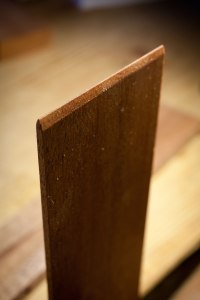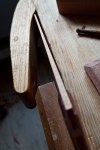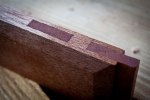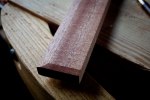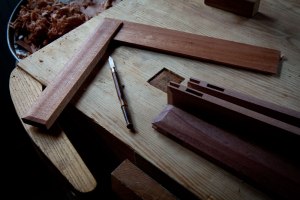
To reward myself for finishing my edit of the translated text of “To Make as Perfectly as Possible: Roubo on Marquetry,” I spent the morning in the shop finishing a try square that had no connection whatsoever to Roubo or the French people.
It’s the small try square from Benjamin Seaton’s famous tool chest that is featured in the must-have book “The Tool Chest of Benjamin Seaton: 2nd Edition” (Tools and Trades History Society).
The first edition was fantastic; the second edition is twice as good. It features lots more data on the tools thanks to the careful measurements and drawings made by Jay Gaynor and Peter Ross at Colonial Williamsburg. Their scholarship pushed this book into one that is rivaled only by “With Hammer in Hand” on early tools. So buy it. Right now.
I bought the second edition the week it was released and have been poring over the drawings for months now (One quibble: The hand-lettered dimensions are too small in places.)
One of the many surprises in these drawings was the detail on the wooden try squares that young Seaton built for his toolkit. The photos make them look like two flat pieces of wood and barely worth note.
But the drawings point out details that made me start building a run of these squares to put to use. Here are some of the details:
1. The blades taper in thickness. They are thickest at the stock (about 1/4”) and taper to .065” slightly at the tip to .16.
2. The blade is joined to the stock with a double tenon. This is a little trickier to make than an open bridle joint.
3. The stock of the square is beveled at the top, bottom and outside edge.
I had milled and mortised about a dozen stocks using wood that was left over from a campaign chest. This morning I discovered that all but four of the stocks had cast horribly. So those wonky bits will become something else.
For kicks, I fooled around with making the blades on the band saw, but found that was a fool’s errand. It was much faster to taper them using a jointer plane and saw the tenons with a tenon saw.
All in all, this square was noticeably more complex to make than the square shown in Roubo.
— Christopher Schwarz
